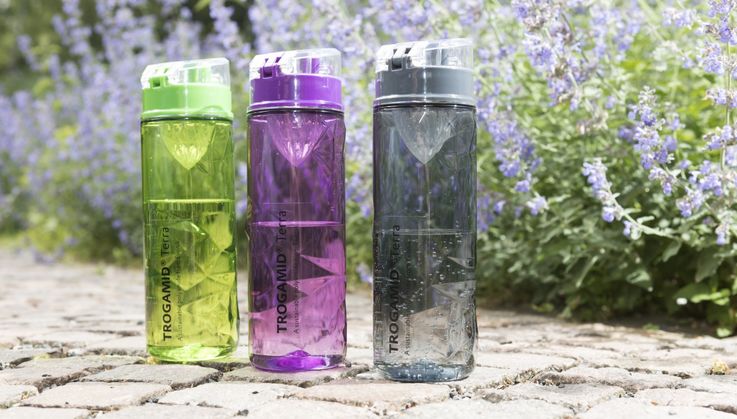
Stylish sunglasses
Heat, sand, dust, creams—sunglasses are exposed to a lot of different challenges. Evonik’s high-performance polymers make them a clearly unbreakable breakthrough for manufacturers, retailers, and, above all, for wearers of sunglasses.
Sunglasses must withstand a lot of stress, not only during the summer vacation: salty sea water, sunscreen, and heat put a lot of stress on the material just like dust, sand, or being dropped. In addition, sunglasses must look good, must effectively protect against UV radiation, and, for all their elegance, they must also be robust—to avoid negative implications for our health or purse. For sunglass producers tackling all these challenges is no mean feat.
High-performance polymers such as TROGAMID® from Evonik focus on fulfilling all these requirements. “Our high-end material is ideally suited for designers,” explains Uwe Kannengießer from Evonik Industries, which manufactures the plastic. “It offers a wide range of creative choices as the material is flexible yet extremely resistant.” Since the substance is also transparent, it can be tinted in any imaginable color. It is flexible, virtually indestructible, and allows for highly delicate processing.
Sunglasses made of ‘unbreakable’ plastic

Tests performed by the TÜV Rheinland testing institute have demonstrated just how sturdy the plastic made by Evonik really is. Some test series involved bouncing steel balls off TROGAMID® lenses—without leaving a trace of damage. Such tests are crucial to determine the breakage safety of lenses, for example during sports, when a ball may hit a pair of glasses. Breaking glass or splintering plastic lenses would be disastrous in that case. Caution is advised as the harm caused by cheap plastic toy sunglasses can do more damage than good. They become brittle after a short time and the risk of injury increases, which makes high-value plastic materials a good choice here. On the other hand, sunglasses made of plain materials generally do not offer sufficient UV protection. “TROGAMID® CX just doesn't create any problems in everyday handling. We like to call it 'trouble-free',” says Kannengießer with a smile.
10 tips for purchasing sunglasses
1. UV filter
UV light is damaging to the eyes. However, as a word of caution, the best protection does not come from the lenses with the darkest tint (tinting strength), but from sunglass lenses made from high-quality material with an integrated UV filter.
2. Tinting strength
Depending on their level of tinting, sunglasses are suitable for different activities, and are organized into so-called lens categories from 0 to 4. While category 2 is a suitable summertime choice for Germany, category 3 is best for Southern Europe and category 4 is recommended for skiing, but not for use in road traffic.
3. Size of lenses
Lenses should be large enough to protect the eyes from sunlight coming in from the side or above as well as from below through reflection.
4. Color of lenses
Brown and gray lenses modify colors the least. For all other lens tints, the eyes require a certain response time to neutralize the color. 5. Quality of protective sunglass lenses High-quality lenses do not show any streaks, blisters or inclusions. Inferior lenses can cause headaches and dizziness.
6. CE marking
Sunglasses sold in Europe must bear CE marking. While this mark makes reference to quality and UV protection, it is not sufficient to identify high-quality lenses. Professional optician associations also point out that the mark is easy to counterfeit.
7. Sunglasses for driving a car
If you drive a lot, select sunglasses with narrow rims and temples to avoid restricting your field of vision. Vision impairments should be corrected by sunglasses as well. The lens category must be below 4.
8. Pick sunglasses according to activity
You will need different lenses for winter sports than for the beach, sailing or surfing. For example, snow reflects over 90 percent of sunlight.
9. Polarizing effect
In simple terms, polarization prevents the visible glare of sunlight on smooth surfaces. As an example, fishermen using highly polarized sunglasses can see fish below the water surface, but not the reflection of the sky and trees.
10. Professional fitting
The frame must be individually adjusted to the shape of the head to make sure no damaging UV radiation can reach the eye, for example laterally past the sunglasses. The adjustment needs to keep the width of the temple, eye spacing, and the position of the ears in mind.



